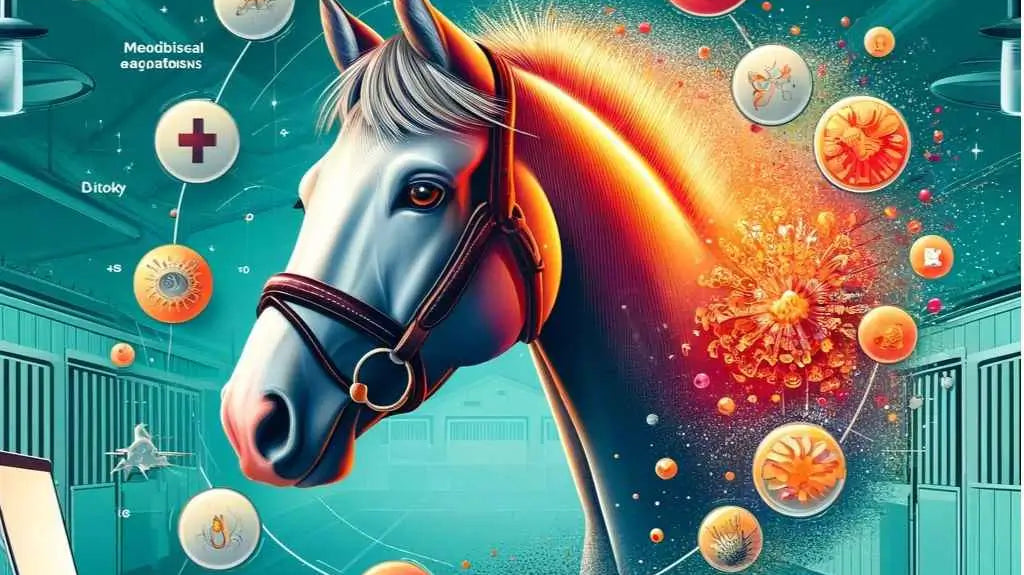The ABCs of Treating Problem Broodmares: The Kerosene, Prednisolone, and Mycotoxin Connection
It's no secret that the world of horses is a world of beauty and grace. Yet, for some broodmares—those noble female horses groomed for breeding—the path to successful conception and a healthy pregnancy can be as bumpy as a wild ride on a rodeo bronco. At the 2023 American Association of Equine Practitioners Convention, two eminent equine reproduction maestros, Ryan Ferris and Karen Von Dollen, unwrapped their treasure troves of knowledge on treatments for problem broodmares. In particular, they focused on the use and impacts of kerosene, prednisolone, and mycotoxins in these treatments.
The Kerosene Paradox: A Rarely Used Helper or Health Hazard?
First off, let's talk about kerosene. While it's typically known for keeping our lamps lit, kerosene has found a less common use in veterinary medicine. It is sometimes used to strip uterine tissue, a process that can aid conception. But fear not, it's not as savage as it sounds. However, like a vigilante superhero, it comes with its risks. Ferris and Von Dollen stressed that kerosene should be used only under particular circumstances and with a veterinarian acting as a knowledgeable sidekick. Unsupervised use might lead to scary scenarios such as uterine damage, infections, and sadly, even death in some severe cases.
Prednisolone: An Anti-inflammatory Ace in the Hole
Next in the expert lineup is prednisolone, a potent anti-inflammatory medication. Regarded almost like a secret weapon, prednisolone reveals its potentials in combatting cases of early embryonic loss. By reducing inflammation, it can thwart this heartbreaking development. Our experts shared that prednisolone can be taken either orally or intramuscularly, with effectiveness tied to timing and dosage. But this medication can be a double-edged sword, as prolonged use might lead to undesirable effects like weight gain, laminitis, and a heightened vulnerability to infections.
Mycotoxins in Hay: A Hidden Villain
Lastly, {our dynamic duo of Ferris and Von Dollen touched upon the presence of hidden villains in the equine world—mycotoxins in hay. These are unwanted toxic substances produced by certain fungi lurking in feedstuffs, capable of disrupting the reproductive system and leading to embryonic loss. Their advice? Test that hay for mycotoxins before feeding it to broodmares!
Wanted: Further Research on These Topics
These insightful revelations have set the stage for further research into advanced veterinary techniques in equine reproduction, the usage and effectiveness of the before-mentioned kerosene and prednisolone, as well as the impacts of different fertility treatments on horse breeding. A greater understanding of these matters could lead to comprehensive improvements in equine reproduction. As the saying goes, every little bit counts when it comes to the love and care of our beloved horses.
In Summary: Small Steps for Horse Health
In wrapping up, Ferris and Von Dollen's chat at the 2023 American Association of Equine Practitioners Convention was truly an eye-opener for treatments for problem broodmares. It underlined how useful kerosene could be in aiding conception, albeit under specific circumstances due to its health risks. In contrast, prednisolone emerged as an efficient anti-inflammatory ally against early embryonic loss, with a cautionary note about its possible side effects. The silent menace of mycotoxins was also highlighted and gave us all a reminder to test the hay before feeding. With a better understanding of such treatments, their implications, and the need for further research, we can continue to help our broodmares thrive, contributing to a healthier and happier equine community.
References: Details from these articles were sourced from discussions by Ryan Ferris and Karen Von Dollen at the 2023 American Association of Equine Practitioners Convention.




